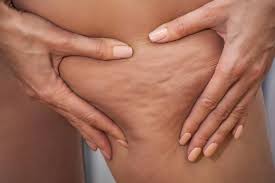Lipedema is a chronic condition that often goes undiagnosed, despite affecting millions of individuals worldwide. Characterized by an abnormal accumulation of fat, usually in the lower body, Lipedema is more than just a cosmetic issue—it can significantly impact physical health and quality of life. Understanding its symptoms and diagnosis is critical for management and treatment.
What Is Lipedema?
Lipedema is a medical condition that predominantly affects women and is rarely seen in men. It is marked by the disproportionate storage of fat, typically in the thighs, hips, and sometimes arms, while the upper body remains comparatively lean. This condition is often confused with obesity or lymphedema, leading to misdiagnoses and improper treatment. Unlike general weight gain, the fat associated with lipedema is resistant to diet and exercise.
Key indicators of lipedema include:
•Symmetry: Affected areas (legs or arms) are often symmetrical.
•Pain and Tenderness: The fat tissue is painful to touch and prone to bruising.
•Mobility Issues: Severe cases can lead to difficulty walking or standing for extended periods.
•No Impact on Hands or Feet: Unlike lymphedema, the hands and feet typically remain unaffected.
Who Is at Risk?
Experts suggest that lipedema may have a genetic component, as it often runs in families. Hormonal factors are also thought to play a significant role, with the condition frequently triggered or worsened during puberty, pregnancy, or menopause. Despite its prevalence, lipedema remains under-researched and under-discussed, emphasizing the need for awareness.
Diagnosing Lipedema
Obtaining an accurate diagnosis for lipedema can be challenging. Since it mimics the symptoms of other conditions like obesity or lymphedema, healthcare providers without specific training in the condition may overlook it. Diagnosis typically involves:
•Physical Examination: A doctor will assess the distribution of fat and check for common symptoms like tenderness and bruising.
•Medical History: Understanding the patient’s history, including family occurrences of similar symptoms, is crucial.
•Exclusion of Other Conditions: Doctors may rule out related disorders like lymphedema or general obesity through imaging or lymphoscintigraphy.
Why Diagnosis Matters
Early diagnosis is critical in managing lipedema. Left untreated, the condition can progress to severe pain, immobility, and lymphedema. Management strategies include compression therapy, manual lymphatic drainage, and, in some cases, liposuction. Recognizing the signs early can lead to better outcomes and improved quality of life.


